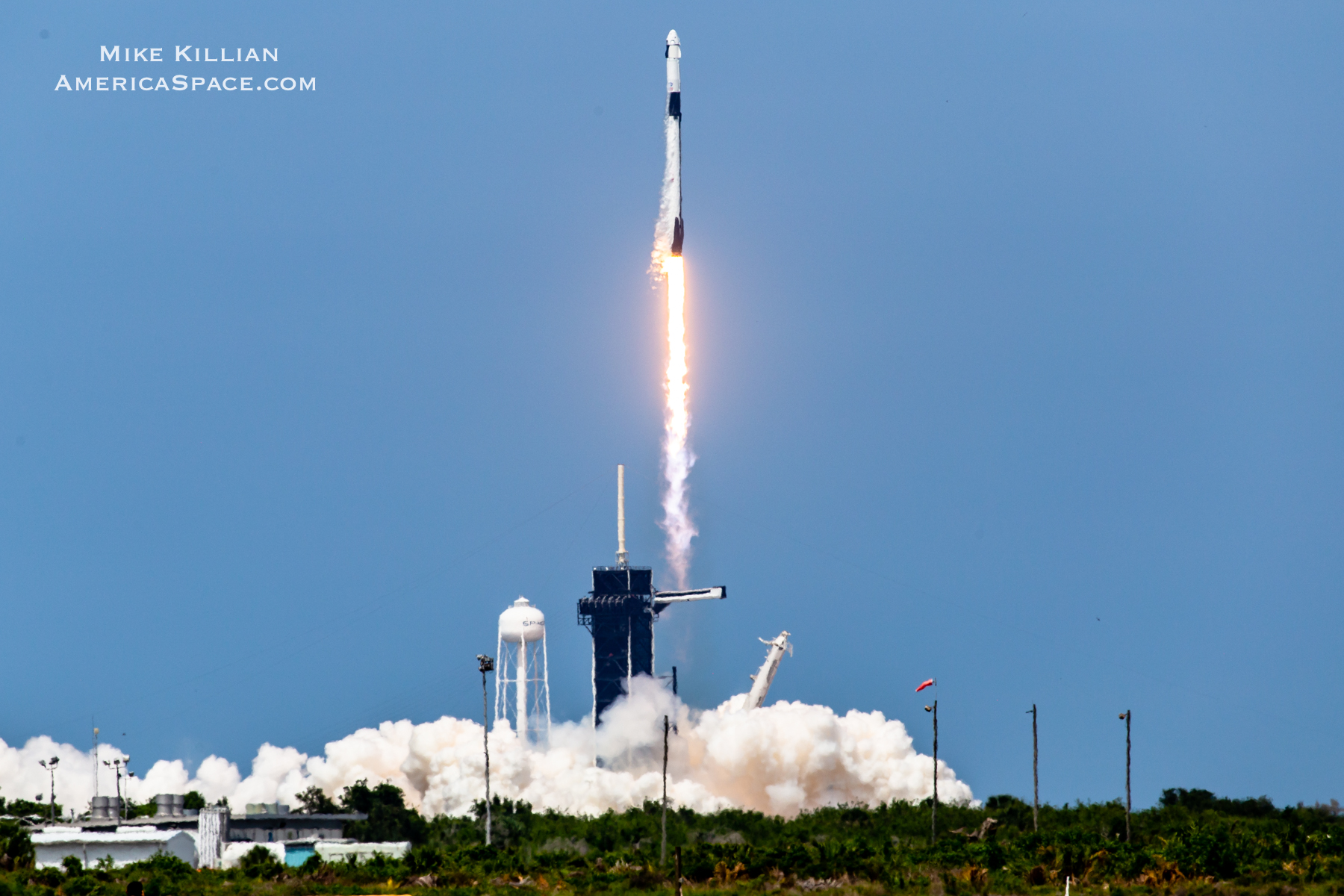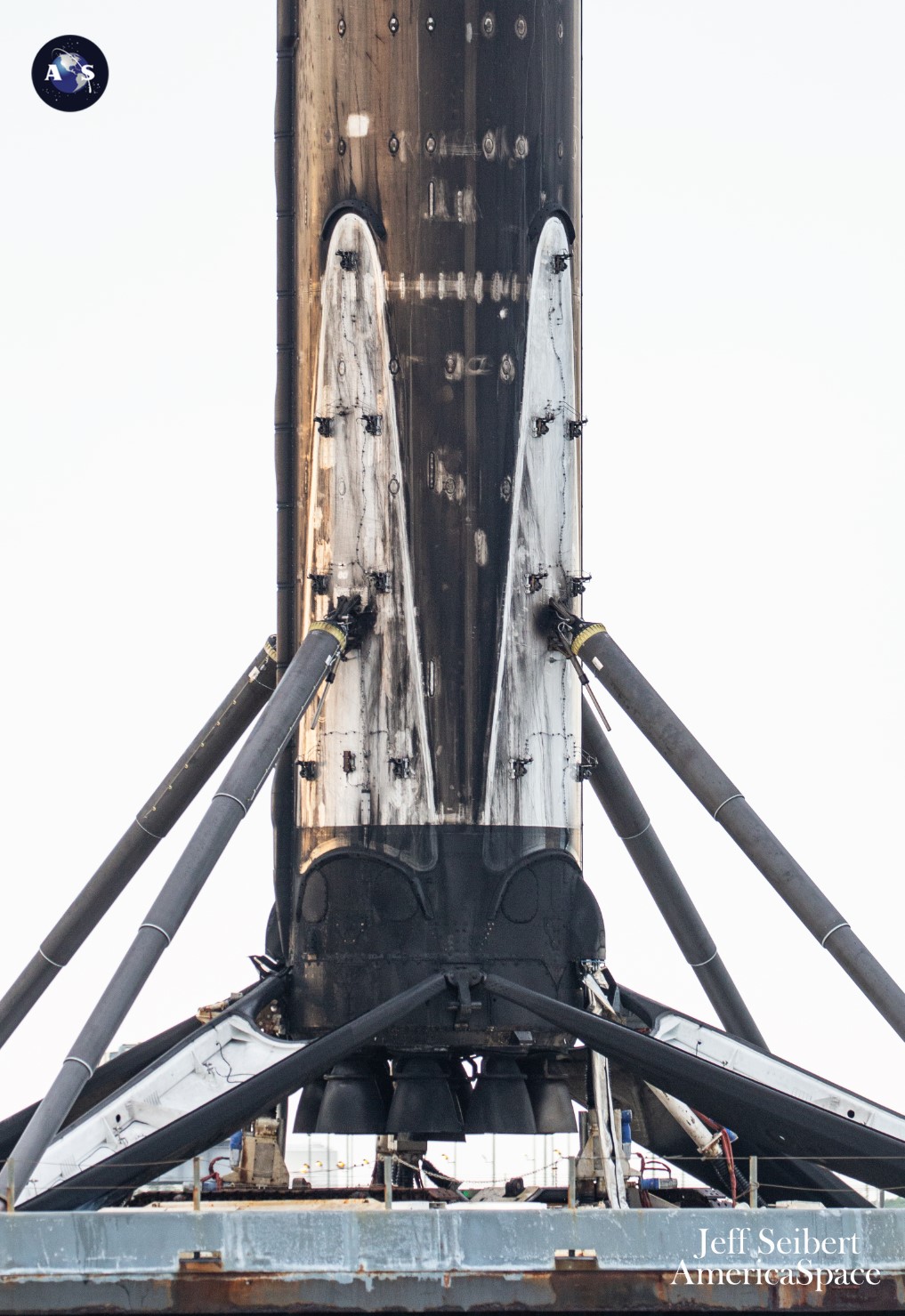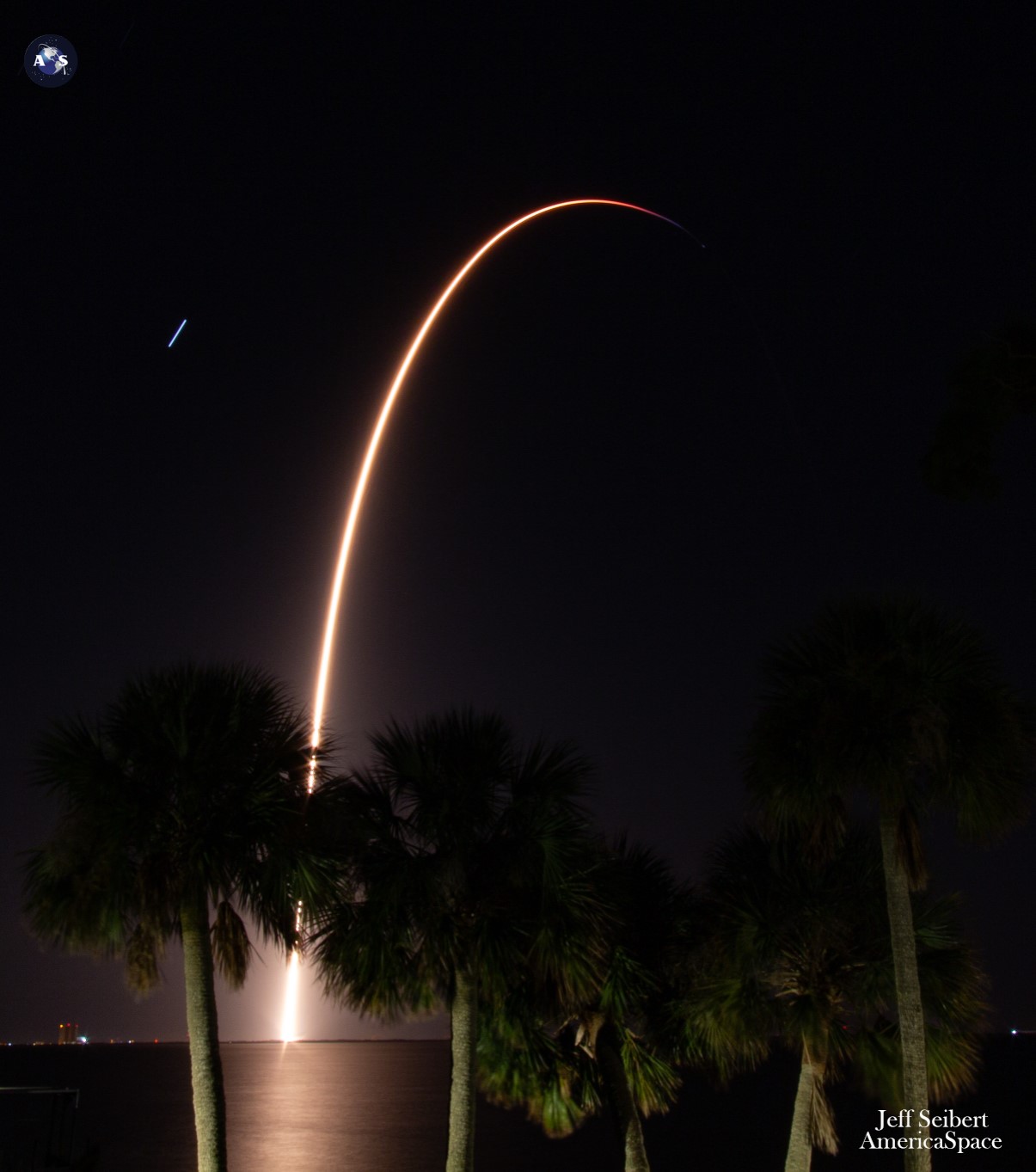
In a sad footnote to close out a dramatic year, SpaceX’s fleet-leading B1058 booster—which entered the fleet to great fanfare in May 2020 by launching NASA astronauts Doug Hurley and Bob Behnken aboard Dragon Endeavour to the International Space Station (ISS)—has reportedly been lost during its transportation back to Port Canavaral, due to high winds and waves. Poor B1058 wrapped up a still-unbroken 18th launch in November and a 19th launch only last weekend, leaving three other 17-times-used boosters in active operational status ready to continue pushing records in 2024.

Early 26 December, SpaceX revealed the news of B1058’s demise, noting that “The Falcon fleet’s life-leading rocket completed its 19th and final launch and landing on 23 December.” It added that across almost 37 months of service the old booster had lifted two astronauts safely into orbit, as well as more than 860 satellites, totaling over 573,000 pounds (260,000 kilograms).

“During transport back to Port early this morning,” SpaceX tweeted in the small hours of 26 December, “the booster tipped over on the drone ship due to high winds and waves. Newer Falcon boosters have upgraded landing legs with the capability to self-level and mitigate this type of issue.”
Left unclear was whether B1058’s carcass—or wreckage—is salvageable. It would certainly be a great pity to lose this singular booster which facilitated the return U.S. astronauts to space, via a U.S.-made spacecraft, atop a U.S.-built rocket, and from U.S. soil, for the first time since the end of the Space Shuttle Program in July 2011.

B1058 roared skyward for the first time on 30 May 2020, when she lifted Dragon Endeavour and her crew of Commander Doug Hurley and Pilot Bob Behnken—both former shuttle astronauts—to the ISS on the Demo-2 mission. The pair went on to spend more than two months aboard the sprawling orbital complex, supporting Expedition 63 Commander Chris Cassidy and Russian cosmonauts Anatoli Ivanishin and Ivan Vagner, performing four complex sessions of Extravehicular Activity (EVA) and assisting in the conduct of dozens of scientific research investigations.

Even before Hurley and Behnken returned home from their 63-day mission, B1058 had already wrapped up a second flight, launching again the following 20 July with the geostationary-bound ANASIS-II military communications satellite for the Government of South Korea. In doing so, she established a new empirical record—now broken—of only 51 days between pairs of launches by the same orbital-class booster, eclipsing an old Space Shuttle record that had stood for more than three decades.

B1058 then entered a regular cadence of launch operations, successfully delivering 625 Starlink low-orbiting internet communications satellites to orbit via the multi-payload Transporter-1 rideshare flight in January 2021 and 14 dedicated missions between October 2020 and last weekend. Notably, Transporter-1 saw her loft the highest number of discrete payloads—a whopping 143, tipping the scales at around 11,000 pounds (5,000 kilograms)—ever launched by a single U.S. orbital-class rocket.

Other payloads included the first Cargo Dragon to fly to the ISS under the second-round Commercial Resupply Services-2 (CRS2) contract. Launched in December 2020, the month-long CRS-21 mission saw B1058 help deliver over 6,400 pounds (2,900 kilograms) of equipment and supplies to the incumbent Expedition 64 crew and return around 4,400 pounds (2,000 kilograms) of unneeded gear and experiment results back to Earth.

Included in B1058’s ISS-bound haul was the Bishop commercial airlock, developed jointly by Thales Alenia Space, Boeing and NanoRacks for installation onto the station’s Tranquility node. CRS-21 became the first Cargo Dragon to autonomously “dock” —rather than robotically “berth”, using the Canadarm2 manipulator—and in launching it B1058 also marked SpaceX’s 100th fully successful Falcon 9 mission.

Although her launch log has been overwhelmingly dominated by Starlink, with over 73 percent of her 19 flights devoted to the internet communications network, B1058 also lifted the 105-payload Transporter-3 on her own tenth mission in January 2022. That particular mission also saw her land, for the first and only time in her career, on solid ground, alighting on Landing Zone (LZ)-1 at Cape Canaveral Space Force Station, Fla., her 18 other flights all returning to the decks of the Autonomous Spaceport Drone Ship (ASDS).

Last fall, she became the first Falcon 9 to fly on a 14th and 15th occasion, but since the fleet-leaders were certified only to 15 missions her “active” status was paused as recertification got underway to extend her lifetime to 20 flights. Returning to the fold last summer, she became the first booster to hit a 16th launch in July, a 17th in September and an 18th in November. Eighteen flights is as yet unmatched by any other member of the fleet, positioning B1058 at least two missions ahead of any of her siblings.

Her loss at sea is certainly disappointing, for it seemed not unreasonable just three days ago that she could have pushed beyond 20 flights as soon as next spring. During her first year of service (2020-2021), her turnaround times averaged about seven weeks, with a personal best of only 27 days attained between a pair of flights in March and April 2021.

As her flight rate increased beyond her tenth launch in January 2022, spacing between missions increased from two to three months and—in response to the extended recertification campaign earlier in 2023—more than a half-year elapsed between her 15th and 16th outings. Turnaround times restabilized last summer with the final four flights of her career respectively spaced less than two months apart.

With B1058 gone, three boosters—B1060, B1061 and B1062—stand as the current fleet-leaders, each having reached 17 missions: B1060 in September and the others late last month and early in December. And behind them stand two others with 15 flights to their credit, three more which have already passed the ten-mission mark and a dozen others which are either repeat-flyers as single-stick Falcon 9s or Falcon Heavy side-boosters or are awaiting the opening launches of their careers in the coming days and weeks.






this one belongs in the rocket-garden
Really, I would have felt better if it had been used as an end of life expendable…solids in place of legs…upper stage rupturing the top bulkhead, and all engines about to burn through right as the propellant ran out after flying 50 times…giving its all and coming apart on the way down.
That’s how it should have went out…not like Mrs. Fletcher on a life-alert commercial.
Remember—ALL rockets are expendable in the end.